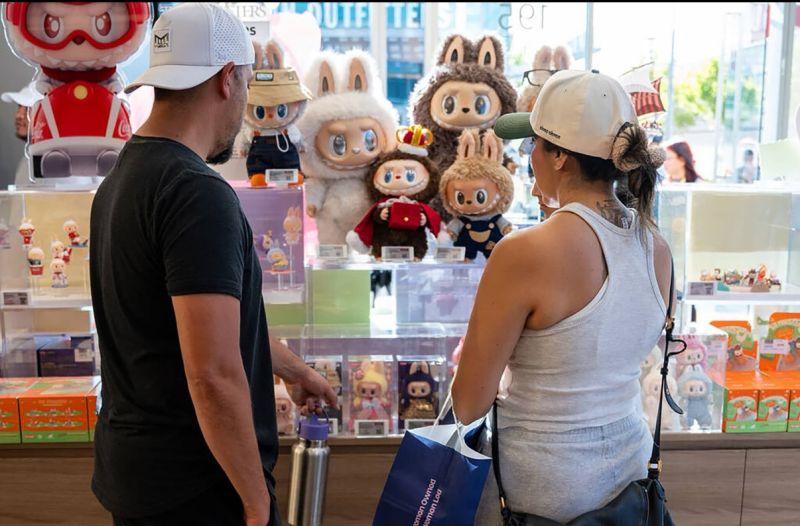Small Indulgences, Big Impact: How ‘Treatonomics’ is Thriving Amid Economic Uncertainty
Small Indulgences, Big Impact: How ‘Treatonomics’ is Thriving Amid Economic Uncertainty
By
Rachel Steinberg
Last updated:
August 11, 2025
First Published:
August 11, 2025

Photo: LinkedIn
The Rise of ‘Treatonomics’: Spending with a Purpose
In the face of economic uncertainty, inflation, and evolving consumer priorities, a fascinating trend known as “treatonomics” is gaining momentum. Consumers are increasingly investing in mood-enhancing products and experiences—from lipsticks and collectible Labubu dolls to high-ticket concert tickets—seeking to uplift their spirits when traditional milestones and celebrations feel out of reach.
This trend builds on the long-observed “Lipstick Effect,” where consumers purchase small luxury items during tough economic times as a morale booster. However, treatonomics expands the concept, encompassing both affordable indulgences and significant, life-affirming experiences that deliver emotional rewards beyond mere material possession.
What Drives Treatonomics?
Retail analyst John Stevenson explains, “You may not be able to afford a new outfit or redecorate your home, but a lipstick, throw cushion, or tablecloth offers a small, affordable way to treat yourself.” This mindset has helped categories like affordable homewares outperform expectations, even during economic slowdowns.
The COVID-19 pandemic further accelerated this trend, as people reassessed wellbeing and prioritized meaningful experiences over material accumulation. For instance, fans might save up $200 to $1,300 for a Taylor Swift concert or an Oasis reunion tour ticket, despite cutting back on everyday expenses.
Stevenson adds, “Treatonomics means cutting costs on essentials while splurging on experiences that feel enriching—whether it’s a weekend concert or a special event.”
Cultural and Generational Shifts Fueling the Trend
Meredith Smith, senior director at retail analysis firm Kantar, highlights that treatonomics—also called “Little Treat Culture” on platforms like TikTok—is not about guilty pleasures but about injecting guilt-free joy into daily life.
Traditional life milestones such as marriage, homeownership, career advancement, and retirement are evolving or becoming less attainable for many, leading consumers to celebrate “inch-stones” instead of milestones.
Smith notes, “Those who can’t afford homes before 40 turn to small treats to express themselves. People without partners or children are celebrating breakups, dog birthdays, and wellness routines with equal enthusiasm.”
Examples include:
- Rising popularity of ‘Resignation Parties’ in China and ‘Divorce Parties’ in the U.S. and Europe.
- Increased spending on adult hobbies or ‘kidulting,’ such as LEGO kits, with some enthusiasts spending up to $1,000.
Economic Context and Consumer Confidence
Consumer confidence remains fragile in key markets. In the UK, GfK’s Consumer Confidence Index dipped slightly to -19 in July 2025. Meanwhile, U.S. consumer confidence showed a modest uptick but stayed below last year’s levels, according to The Conference Board.
This cautious outlook fuels treatonomics as consumers seek affordable, gratifying purchases and experiences amid ongoing economic volatility.
Kantar’s Global Economic Policy Uncertainty Index labels the current era as one of “Great Uncertainty,” a state expected to persist for the next five to eight years.
Smith predicts, “Treatonomics is likely to continue growing for at least three to five years, though micro-trends will evolve differently by region and culture. Brands will need agility and cultural sensitivity to keep pace.”
What This Means for Brands and Consumers
For brands, understanding treatonomics means recognizing the importance of offering products and experiences that connect emotionally, deliver value, and align with shifting consumer priorities. Whether through affordable everyday luxuries or memorable experiences, brands that tap into this trend can foster loyalty and resilience.
For consumers, treatonomics reflects a broader cultural shift toward valuing joy, mental health, and personal expression during uncertain times. This trend illustrates how small moments of self-care and celebration can create significant positive impacts on wellbeing.
Popular articles
Subscribe to unlock premium content
Global Cultures and the Hidden Drivers of Productivity and Happiness

The Future of Personalized Medicine

Digital Nomads and the New Global Economy

Global Cultures and the Hidden Drivers of Productivity and Happiness

The Future of Personalized Medicine

Global Cultures and the Hidden Drivers of Productivity and Happiness









